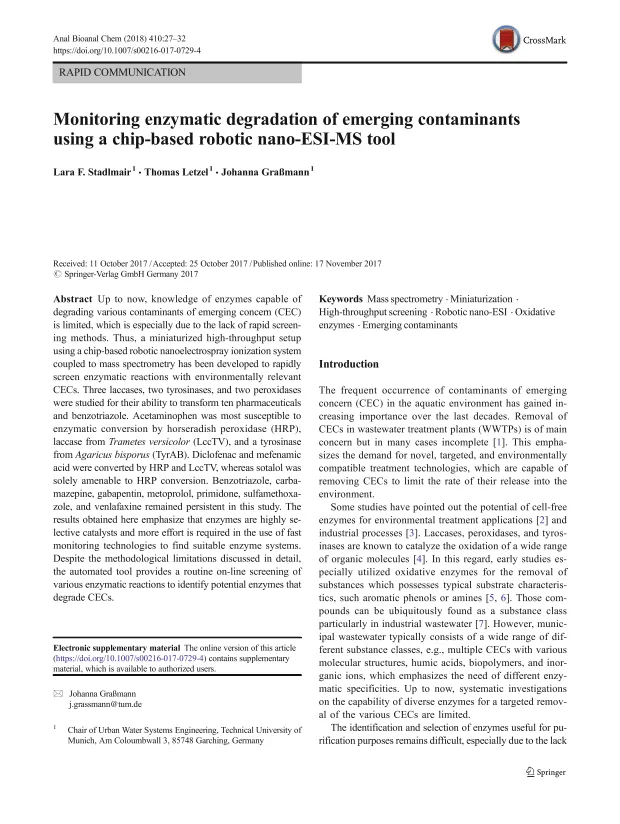Up to now, knowledge of enzymes capable of degrading various contaminants of emerging concern (CEC) is limited, which is especially due to the lack of rapid screen- ing methods. Thus, a miniaturized high-throughput setup using a chip-based robotic nanoelectrospray ionization system coupled to mass spectrometry has been developed to rapidly screen enzymatic reactions with environmentally relevant CECs. Three laccases, two tyrosinases, and two peroxidases were studied for their ability to transform ten pharmaceuticals and benzotriazole. Acetaminophen was most susceptible to enzymatic conversion by horseradish peroxidase (HRP), laccase from Trametes versicolor (LccTV), and a tyrosinase from Agaricus bisporus (TyrAB). Diclofenac and mefenamic acid were converted by HRP and LccTV, whereas sotalol was solely amenable to HRP conversion. Benzotriazole, carba- mazepine, gabapentin, metoprolol, primidone, sulfamethoxa- zole, and venlafaxine remained persistent in this study. The results obtained here emphasize that enzymes are highly se- lective catalysts and more effort is required in the use of fast monitoring technologies to find suitable enzyme systems. Despite the methodological limitations discussed in detail, the automated tool provides a routine on-line screening of various enzymatic reactions to identify potential enzymes that degrade CECs.
